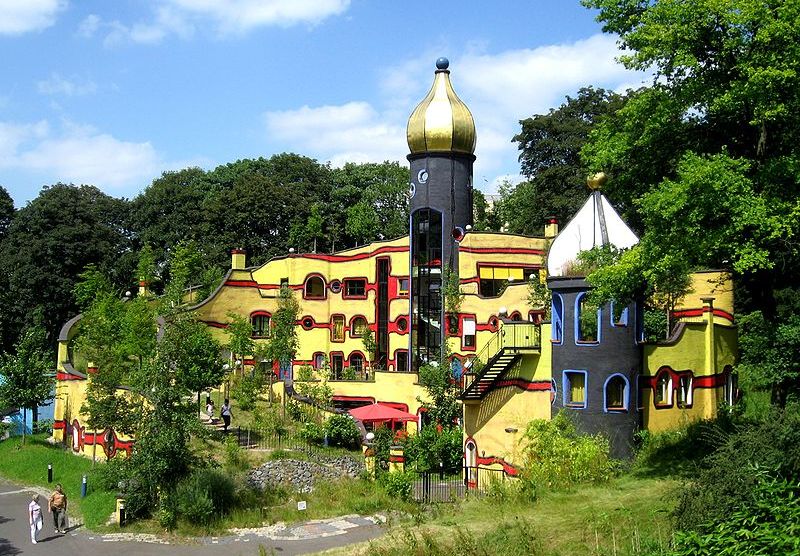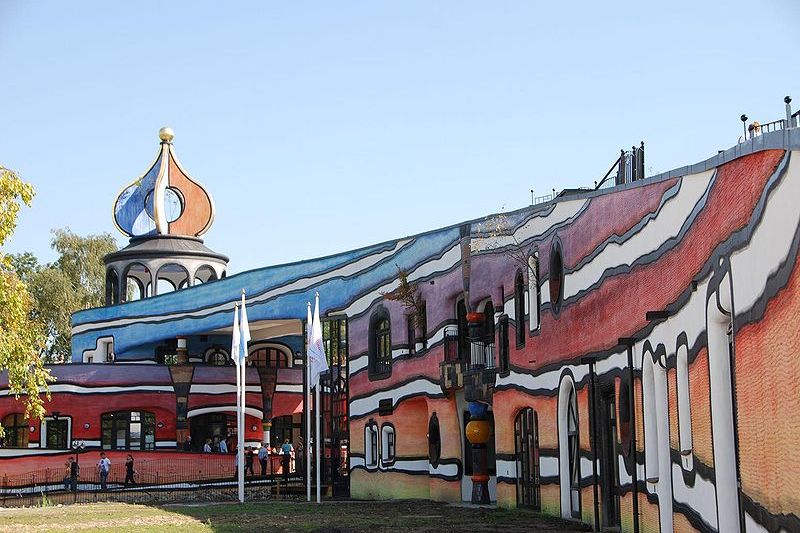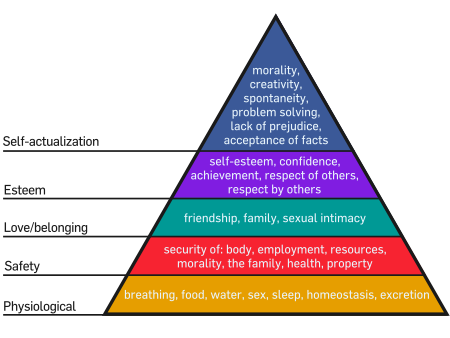Wednesday, 20 March 2013
Wednesday, 13 March 2013
Wednesday, 6 March 2013
Fern Gully
Beautiful story. so relevant. ideas wise they have cracked it. they understand it all. a must see.
The man has touched many
"His adopted surname is based on the translation of "sto" (the Slavic word for "(one) hundred") into German. The name Friedensreich has a double meaning as "Peaceland" or "Peace-rich" (in the sense of "peaceful"). The other names he chose for himself, Regentag and Dunkelbunt, translate to "Rainy day" and "Darkly multi-coloured". Therefore his name Friedensreich Hundertwasser translates directly into English as "Peace-Kingdom Hundred-Water"."
His ideas are proved as being more universal than just a visual artist through his architecture and people in other areas he has inspired
https://soundcloud.com/dunkelbunt
This music group have adopted his self given name i would say due to his art being so pure. It proves the idea that creativity is natural
LIFE IS CREATION - LIFE IS CREATED - LIFE WAS CREATED
It seems so obvious now. Art in galleries is almost pointless and valueless as it is all around us anywhere anyway.
This is where the difference of public and private galleries becomes important to understand when thinking about aiming my work.
Private galleries are trying to materialise the value of your work when really it is everything is on the same level. obviously you as an individual you need sustenance (look at Marlsow's hierachy of needs a few posts below for details/evidence of this) so you can not always avoid this.
Public galleries will allow a space for work which ticks less boxes, yet with current climate (recession) it may be hard to see a future for this in less you go big.
Essentially art can be for yourself and other people. I think inspiring people through your art to realise that life(creation) is with in everyone can be the greatest achievement. when people realise this they will stop looking to others for answers and find them within themselves. This will then solve all the worlds problems... peace and love xxxx
Tuesday, 5 March 2013
Hundertwasser painting theory
Transautomatism is a modern style of painting, founded by Friedensreich Hundertwasser. It is a kind of surrealism, focusing on the viewer's fantasy rather than an objective interpretation. Different people see different things in the same picture. The artist's intention is less pertinent to the end experience, therefore, than how the viewer chooses to interpret it. Transautomatism is based on the different styles which Hundertwasser developed, e.g. spirals and 'drops'.
Transautomatism is about Hundertwasser's theory that straight lines are 'godless and immoral'. That as humans we have lost our connection to the organic geometry of nature by forcing ourselves to exist in boxes as homes. He believed in the fluidity of line and shape hence his architectural and painting style. Being educated in a Montessori school his self directed learning came from nature and therefore his drive to return to colour and organic states.
Hundertwasser Architecture
Amazing buildings. no straight lines. a wonderful example of a man who's art is not confined to one medium and that makes real difference in the real world. Unlike some gallery which only has its place to raise an eyebrow of an onlooker. Hundertwasser provides solutions, beautiful ones at that. to bring us living closer with nature in a more harmonious fashion. It is amazing seeing the visions in his paintings realised in such a spectacular way. This man is my biggest inspiration at the moment. Genius
http://www.dailyartfixx.com/2012/12/15/friedensreich-hundertwasser-1928-2000/
http://www.strangebuildings.thegrumpyoldlimey.com/2011/08/in-spotlight-architect-friedensreich.html




One of Hundertwasser's oft used motifs was the integration of his buildings with nature and the use of vegetation on the roofs of his structures. Perhaps the best example of this aspect of his work is the Hotel Rogner Bad Blumau, Bad Blumau, Austria pictured to the left.
This aspect of his style is best summed up with another couple of his quotations; in this case they our favorites and without doubt they are quotes that also provide insight into his philosophy on life and spirituality:
"I’ve worked a great deal with grass roofs, putting soil on top and having things grow, but there is something strange in this, more than ecological. It is a religious act to have soil on your roof and trees growing on top of you; the act reconciles you with God, with nature, maybe not Christian or Jewish monotheism, but something wider, older - a very ancient wisdom."
and again:
"The true proportions in this world are the views to the stars and the views down to the surface of the earth. Grass and vegetation in the city should grow on all horizontal spaces - that is to say, wherever rain and snow falls vegetation should grow, on the roads and on the roofs. The horizontal is the domain of nature and wherever vegetation grows on the horizontal level man is off limits; he should not interfere. I mean taking away territories from nature, which human beings have always done."
In addition to his use of color and avoidance of straight lines which are common to all of his projects many also include another common element; the "crowning" of his creations with cupolas or "onion domes". The two Ronald McDonald Houses designed by Hundertwasser demonstrate this and are shown below. They are located in Essen, Germany and Valkenburg, Netherlands.
During the course of his career Hundertwasser did not appear to ever restrict himself to any one type of project or even show any leaning to a particular type of building; a characteristic that most architects do seem to have. In fact the range of projects he embraced was very broad and extends from hotels and apartment complexes to residences and business premises and on to industrial plants and even public toilets. He managed to infuse all of his projects with his trademarks of color, vibrancy and fun even when the subject of his design was decidedly unglamorous; take for example the two plants he designed in Osaka, Japan the Maishima Incineration Plant and the Maishima Sludge Center.
http://www.dailyartfixx.com/2012/12/15/friedensreich-hundertwasser-1928-2000/
http://www.strangebuildings.thegrumpyoldlimey.com/2011/08/in-spotlight-architect-friedensreich.html



One of Hundertwasser's oft used motifs was the integration of his buildings with nature and the use of vegetation on the roofs of his structures. Perhaps the best example of this aspect of his work is the Hotel Rogner Bad Blumau, Bad Blumau, Austria pictured to the left.
This aspect of his style is best summed up with another couple of his quotations; in this case they our favorites and without doubt they are quotes that also provide insight into his philosophy on life and spirituality:
"I’ve worked a great deal with grass roofs, putting soil on top and having things grow, but there is something strange in this, more than ecological. It is a religious act to have soil on your roof and trees growing on top of you; the act reconciles you with God, with nature, maybe not Christian or Jewish monotheism, but something wider, older - a very ancient wisdom."
and again:
"The true proportions in this world are the views to the stars and the views down to the surface of the earth. Grass and vegetation in the city should grow on all horizontal spaces - that is to say, wherever rain and snow falls vegetation should grow, on the roads and on the roofs. The horizontal is the domain of nature and wherever vegetation grows on the horizontal level man is off limits; he should not interfere. I mean taking away territories from nature, which human beings have always done."
In addition to his use of color and avoidance of straight lines which are common to all of his projects many also include another common element; the "crowning" of his creations with cupolas or "onion domes". The two Ronald McDonald Houses designed by Hundertwasser demonstrate this and are shown below. They are located in Essen, Germany and Valkenburg, Netherlands.
 |  |
During the course of his career Hundertwasser did not appear to ever restrict himself to any one type of project or even show any leaning to a particular type of building; a characteristic that most architects do seem to have. In fact the range of projects he embraced was very broad and extends from hotels and apartment complexes to residences and business premises and on to industrial plants and even public toilets. He managed to infuse all of his projects with his trademarks of color, vibrancy and fun even when the subject of his design was decidedly unglamorous; take for example the two plants he designed in Osaka, Japan the Maishima Incineration Plant and the Maishima Sludge Center.
Hundertwasser Art
The Colorful Hundertwasser
No straight lines, please!

http://inspirationgreen.com/hundertwasser.html
http://www.hundertwasser.at/english/hundertwasser/biographie.php
THIS MAN IS AN INSPIRATION
Artist, architect and environmentalist Friedrich Stowasser (1928 - 2000) changed his name to Friedensreich Regentag Dunkelbunt Hundertwasser which roughly translates as 'Peace-rich or Peaceful, Rainy day, Darkly multicolored, Hundred water.' Hundertwasser had an Austrian Catholic father who died when he was a small child and a Jewish mother. He and his mother escaped the fate of much of her family by posing as Catholics. He traveled extensively as a young man and enrolled at the Ecole des Beaux Arts, Paris, but left after a day. For years he lived, traveled the world, and painted on a reconstructed salt hauler sailboat which he called the “Regentag” (rainy day). He also owned a farm cottage in northern France and a cabin in New Zealand. Hundertwasser felt a special connection to New Zealand, and was buried there when he died in the year 2000.




Hundertwasser- Blobs grow in beloved gardens. hundertwasser-kalender.de "We are in need of magic I fill a picture until it is full with magic, as one fills up a glass with water."



Hundertwasser- Human Environment (Quatar) 1982 www.artbrokerage.com


Do Not Wait Houses, Japanese Wood Cut, 1989
I have a feeling this print is about not having foundations. we should not scar the planet, destroying the biosphere
No straight lines, please!

http://inspirationgreen.com/hundertwasser.html
http://www.hundertwasser.at/english/hundertwasser/biographie.php
THIS MAN IS AN INSPIRATION
Artist, architect and environmentalist Friedrich Stowasser (1928 - 2000) changed his name to Friedensreich Regentag Dunkelbunt Hundertwasser which roughly translates as 'Peace-rich or Peaceful, Rainy day, Darkly multicolored, Hundred water.' Hundertwasser had an Austrian Catholic father who died when he was a small child and a Jewish mother. He and his mother escaped the fate of much of her family by posing as Catholics. He traveled extensively as a young man and enrolled at the Ecole des Beaux Arts, Paris, but left after a day. For years he lived, traveled the world, and painted on a reconstructed salt hauler sailboat which he called the “Regentag” (rainy day). He also owned a farm cottage in northern France and a cabin in New Zealand. Hundertwasser felt a special connection to New Zealand, and was buried there when he died in the year 2000.




Hundertwasser- Blobs grow in beloved gardens. hundertwasser-kalender.de "We are in need of magic I fill a picture until it is full with magic, as one fills up a glass with water."



Hundertwasser- Human Environment (Quatar) 1982 www.artbrokerage.com


Do Not Wait Houses, Japanese Wood Cut, 1989
I have a feeling this print is about not having foundations. we should not scar the planet, destroying the biosphere
Maslow's Hierarchy of Needs
Maslow's hierarchy of needs is a theory in psychologyproposed by Abraham Maslow in his 1943 paper "A Theory of Human Motivation".[2] Maslow subsequently extended the idea to include his observations of humans' innate curiosity.
His theories parallel many other theories of human developmental psychology, some of which focus on describing the stages of growth in humans


His theories parallel many other theories of human developmental psychology, some of which focus on describing the stages of growth in humans


info for me growing
Do I have to feed my cultures as they are growing?
- Bacteria, mold and yeast are like us, they all need some sort of food source. Agar is the standard growth medium for the culturing of bacteria, mold or yeast. Agar is extracted from type of red algae and is a polysaccharide (a type of carbohydrate) which is an ideal growth medium for these microorganisms. Additional food or nutrients can be added to the agar to make your cultures grow more successfully. When agar is mixed up it resembles Jell-O. It is available usually in a powder form that is mixed with water and nutrients to make a gel that you can use to grow microorganisms. It also can come premixed in gel form.
Using agar alone will support microorganism growth. Adding additional nutrient (an additional type of food) will make your culture grow more successfully. Microorganisms are similar to you and I, we all like some types foods and not other types. - You can add a small amount of chicken, beef or vegetable broth to your agar mix. Note: Be aware that salt and preservatives will kill or slow the growth of microorganisms. Broths labeled "organic" and/or "low sodium" are the best to use because they most often have the lowest amount of salt and preservatives. Add only add a small amount of broth, about 5 ml (just under a teaspoon) of each 250 ml (just under one cup) of mixed agar. Add any broth to the agar / water mixture before you boil the agar. This will sterilize the broth when you sterilize the agar / water mixture. You can also add small amounts of sugar instead of the broth if you want to promote yeast growth. Again always add any nutrients to your mixture before you boil it.
from http://www.scienceenterprises.com/growingbacteria.aspx
are we not all metaphysicians?
Metaphysics
From Wikipedia, the free encyclopedia
Metaphysics is a traditional branch of philosophy concerned with explaining the fundamental nature of being
and the world,[1]although the term is not easily defined.[2] Traditionally, metaphysics attempts to answer two
basic questions in the broadest possible terms:[3]
and the world,[1]although the term is not easily defined.[2] Traditionally, metaphysics attempts to answer two
basic questions in the broadest possible terms:[3]
- What is there?
- What is it like?
Measuring the World beyond the Human Gaze
http://arttattler.com/archivemachinevision.html
Very interesting article exploring the unkown effects of the technologies we are so rapidly installing, relying on and living with.

Very interesting article exploring the unkown effects of the technologies we are so rapidly installing, relying on and living with.

Charles Avery
Scottish artist Charles Avery (born 1973) has devoted himself exclusively to the creation of a fictional island archipelago since 2004. In detailed, large-scale drawings, installations, sculptures and objects, Avery forms a bizarre imaginary reality out of diverse philosophical ideas and concepts: Fabulous creatures, deities, tourists and adventurers are embedded in a complex social structure, merging into an entire cosmos that ranges between pure fantasy and theoretical reflection.

Charles Avery, World Map, 2008, Gouache, pencil, ink and gold colour on paper, 255 x 330 cm, Courtesy Hamilton Corporate Finance, London, Foto: Andy Keate.

Charles Avery, Dualist, 2010, Bronze, acylics and gouache on cardboard, 57 x 37 x 48 cm, Foto: Michael James Lewis.

Charles Avery, Untitled (MaGregors Bar), 2008, Pencil and charcoal on paper, 115 x 162 x 5 cm, Courtesy Derek Harte, London, Foto: Andy Keate.
from http://arttattler.com/archivecharlesavery.html
from http://arttattler.com/archivecharlesavery.html
Subscribe to:
Posts (Atom)